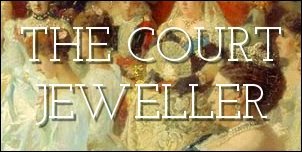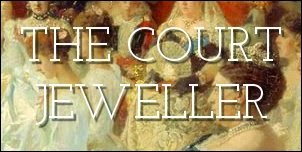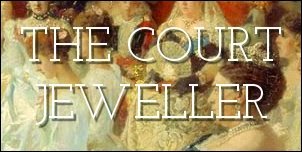The Koh-i-Noor [2], which is supposed to have been worn by the Pandus of Hindu mythology, is traceable from the time of Shah Jehan [3], the Mogul emperor. It was first seen by the French traveler, Tavernier [4], in 1665, when it was in the possession at Delhi of the Emperor Aurangzeb [5], and after many vicissitudes, came into the possession of Shah Shuja [6] who, when expelled from Kabul, carried it away with him. Shah Shuja took refuge at Lahore with the Sikh ruler Ranjit Singh [7], who, in 1813, “commandeered” the jewel, which subsequently came into the possession of Dhuleep Singh [8]. He kept it until 1849, when the East India Company annexed Lahore, and it presented the jewel to Queen Victoria in 1860.
It is, of course, well known how casually the possession of this treasure was regarded by the Lawrences [9], and the story has often been told how, placed in the trousers pocket of a suit sent to the wash, it was rescued by a native servant who thought it was a piece of glass.
About the same time, of course, various other jewels of great value came into the possession of Queen Victoria, including the famous Ranjit Singh necklace of 224 pearls [10]. Queen Victoria had two of the pearls made into earrings, but, thinking them rather showy, did not wear them, though they are still, of course, in the possession of the Royal House.
Most of the Indian crown jewels were, undoubtedly, in olden time used for purposes of raising money. The practice was not unknown in England. In 1625, Charles I pawned much of the treasure in the Tower to Holland [11], to secure funds for the war with Spain, and it does not seem that it was ever redeemed. In 1643, Charles I turned the crown and sceptre into money, and in 1649 the British regalia was completely destroyed by order of the Commons.
In India circumstances were often much the same. When the jewels, say, at Delhi, were captured, the captor very often placed the chief ones on the market again, and they eventually often drifted back to India, having been marked, as in the case of the Nadir Shah ruby [12], with the circumstances of their varied possession.
Indeed, it is thought by experts that probably nearly all the well-known jewels have their history recorded somewhere in the private books of Indian dealers.
In any case, the royal history should be a fascinating compilation. Few objects may have so full a record as the Koh-i-Noor or the Shah Shuja armlet [13], now in the Tower, but when one reads the entrancing narrative of the Frenchman, Bernier [14], of the wealth of jewels at the Court of Aurangzeb, one feels that, somewhere or other, there must be a wealth of material.
Of what he then saw, the identity of the great golden throne [15] is, of course, known: it is now at Tehran, valued at $48,000,000. Perhaps the new royal history may throw some new light on the subject.


